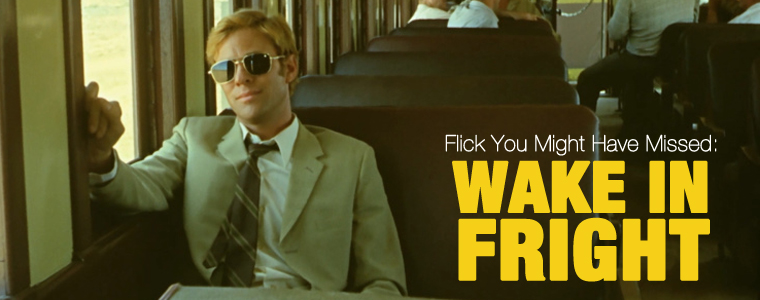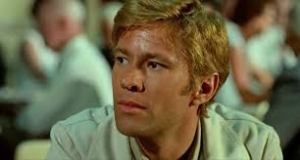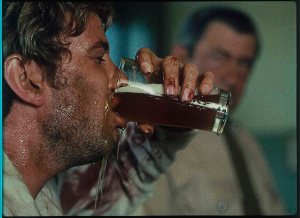Headed for Destruction
by James Roland
Anthony Buckley found treasure in a dusty Pittsburgh warehouse.
His journey spanned two years and three countries as he searched storage areas in New York, London, and Dublin before finally tracking down Wake in Fright, a film that he’d edited forty years before.
From a large box labeled “For Destruction,” Buckley pulled out 200 reels of the almost-forgotten cinema masterpiece. As far as anyone knew, it was the only print in existence. It was scheduled to be incinerated one week later.
The film was shipped back to Australia, where Deluxe Lab in Sydney spent another two years repairing the damaged negative, frame by frame. The fully restored movie was released in theaters in 2012.
Back in 1971, Wake in Fright premiered at the Cannes Film Festival to rave reviews, then went on to play in France for five months. But Australian audiences balked at the brutal portrayal of their country, leading to poor box office returns. According to actor Jack Thompson, during one screening an Australian man stood up and yelled at the screen, “that’s not us!” To which Thompson yelled back, “sit back down, mate. It is us!”
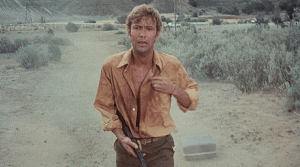 Distributors also felt the film was too intense for American audiences, so they released the movie stateside to a single art-house theater. It opened on a Sunday night in the middle of a blizzard, and then promptly disappeared from public knowledge.
Distributors also felt the film was too intense for American audiences, so they released the movie stateside to a single art-house theater. It opened on a Sunday night in the middle of a blizzard, and then promptly disappeared from public knowledge.
Given the film’s history, the fact that it’s now available on Blu-ray, DVD, and Netflix streaming is nothing short of a miracle. Luckily, the film lives up to its legend.
“I saw [Wake in Fright] when it premiered at Cannes in 1971, and it left me speechless. Visually, dramatically, atmospherically and psychologically, it’s beautifully calibrated and it gets under your skin one encounter at a time.” – Martin Scorsese
Starting off with a harsh, barren landscape shot that rivals the intense beauty of David Lean’s work, the film grabs its audience by the shirt collar and doesn’t let go until its final moments.
The story is largely plotless, following a burnt-out school teacher named John Grant as he travels from his one-room schoolhouse in the Outback to his girlfriend in Sydney for Christmas break.
On a layover in the haunted little town of Bundanyabba, he makes a drunken decision to stake all his savings on a game of Two-up (an Australian game of chance) and the result sends him spiraling into a lost weekend of cheap beer, hot sand, and existential delirium.
Wake in Fright is one of the most experiential films you’re likely to see. While it follows a linear storyline, it also eschews normal dramatic narrative. It’s simply a series of seemingly unrelated events, building an ever-increasing sense of dread punctuated by bursts of bizarre violence and sexuality.
To describe the events of the story wouldn’t do it justice. Other than one notable and infamous scene involving a kangaroo hunt — a scene so brutal it elicited a special postscript explanation from the producers – the film consists largely of sweaty men drinking beer and getting in fights.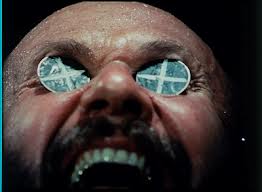
It’s the style of Wake in Fright which makes it a masterpiece. The movie starts off staunchly in the land of Realism and slowly travels into a dreamlike world, culminating in Grant’s final epiphany by way of a literal nightmare.
Many times throughout the film I found myself squirming in my chair as if I was watching a tightly plotted thriller, yet in retrospect nothing much was happening. The setting, dialog, sound, and imagery are all designed to unsettle the audience and make them feel as if they are in danger when really Grant is only in danger of himself.
It’s here that Wake in Fright really shines, by using the Outback’s brutality to reflect Grant’s own failings and insecurities. The fabulous script by Evan Jones contains no voice-over and hardly any pointed character exposition, so director Ted Kotcheff brings subtext to the surface by using startling imagery, most famously a dream sequence involving two “exed out” pennies falling into the eyes of Donald Pleasence.
The stunning visuals and permeating tone of dread are a testament to Kotcheff’s talent, especially since the most notable entries to his later resume are the first Rambo film, Weekend at Bernie’s, and multiple episodes of Law and Order, all things which have a certain value but fall short of the deft touch on display in Wake in Fright.
With a minimalist plot and atmospheric cinematography, it’s up to the actors to provide the emotional core of the picture. Gary Bond’s take on John Grant is subtle, subversive, and often overlooked amidst the balls-to-the-wall performances of the other actors. He’s a slow burn that at first might seem boring, but when you compare where he starts out to where he ends up, the change is staggering.
Before / After
Still, Donald Pleasence as Doc Tydon steals the show. As a horror fan I’ve always had a soft spot for Pleasence as a Halloween alum, but never gave him much credit as a serious actor. But here, from his spine-tingling opening line to his frantic, homoerotic grappling match with Grant near the end of the film, he gives a phenomenal performance that swings for the fences while bringing a deep, emotional undertone of sadness and desperation. It’s easily one of the most underrated film performances I’ve seen.
 Two other actors of note are Jack Thompson and Chips Rafferty, both staples of Australian cinema. Thompson plays an aggressive hunter who all but kidnaps Grant for a night of debauchery. His show-stopping kangaroo hunting scene is a force to be reckoned with, a literal wild ride that seems to ooze sweat and gasoline, predating the Mad Max car chases that made Australian films famous by eight years.
Two other actors of note are Jack Thompson and Chips Rafferty, both staples of Australian cinema. Thompson plays an aggressive hunter who all but kidnaps Grant for a night of debauchery. His show-stopping kangaroo hunting scene is a force to be reckoned with, a literal wild ride that seems to ooze sweat and gasoline, predating the Mad Max car chases that made Australian films famous by eight years.
Rafferty’s turn as Jock Crawford gives the film a sort of moral center. At first portrayed as another aggressive simpleton, Jock’s return at the end of the film reveals him as a kind of father figure. Rafferty has a John Wayne quality about him, a ‘man’s man’ with a dash of goofy charm. He commands the screen with sheer charisma and he’s a joy to watch. This was his last film (he died the year it was released) and the thought of this performance one week from being destroyed by a fire is heart-wrenching.
From its production to final distribution, forty years later, Wake in Fright is a little miracle of cinema.
It’s apt that a film about one man’s journey through a bleak, existential valley of despair spent so many years unknown and on the brink of destruction. But like its finale, the film ultimately stands as a symbol of hope, that we humans will eventually get past our immediate trappings to see better days ahead.
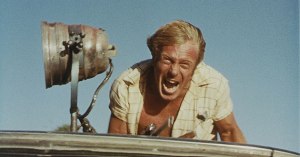
Drafthouse Films distributes rare, visceral cinema. Many of their films are available on Netflix streaming and you can join their Alliance membership where they mail ten films to your door on gorgeous Blu-ray loaded with special features.
James Roland’s work also can be found at Medium Cowboy: Essays on Story and Cinema.
